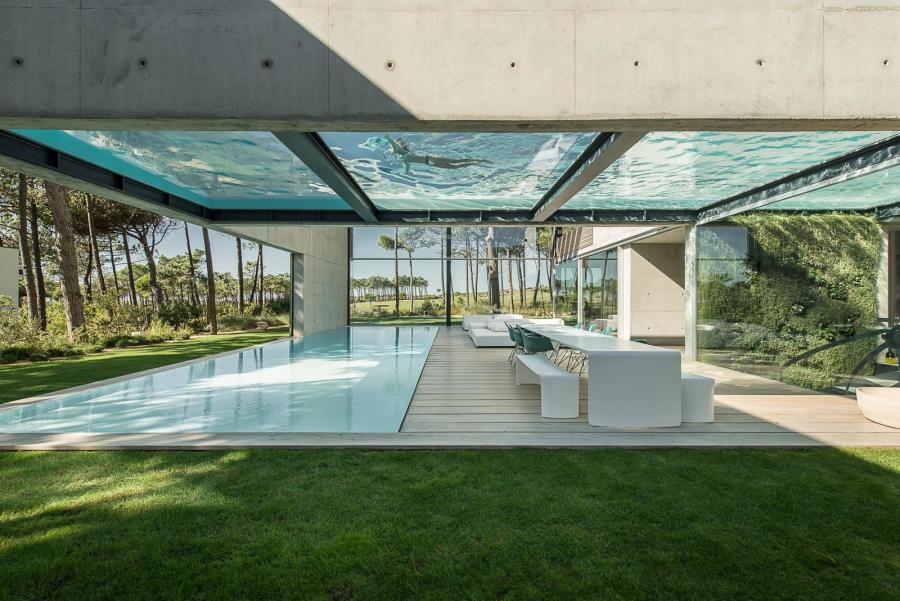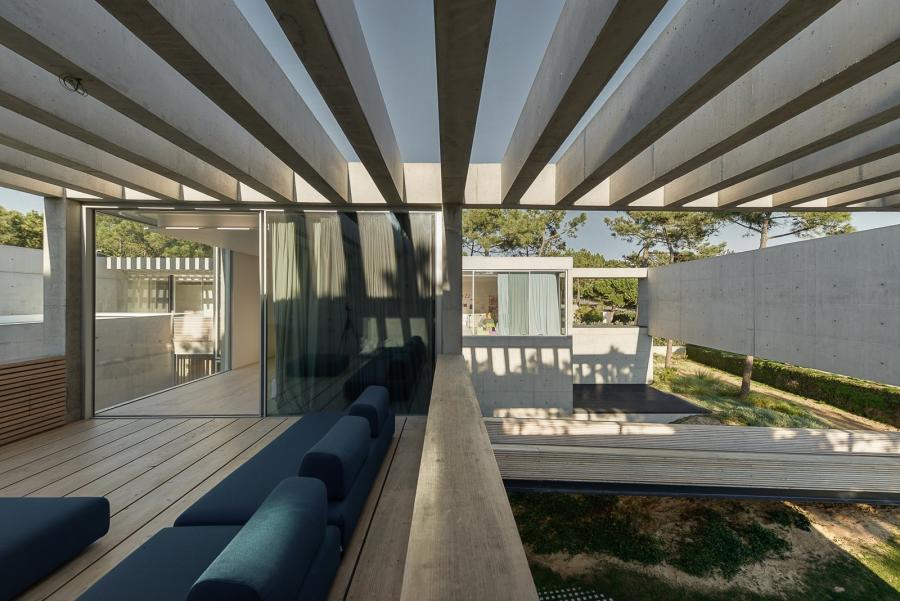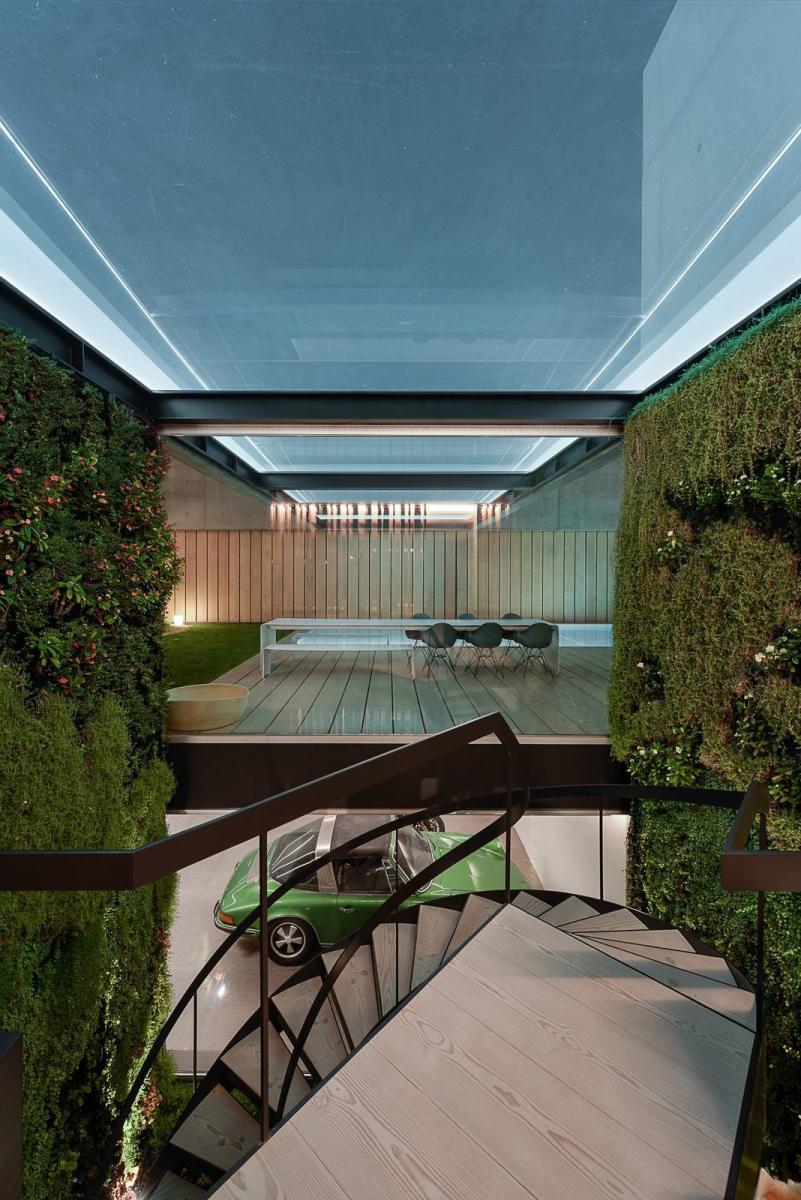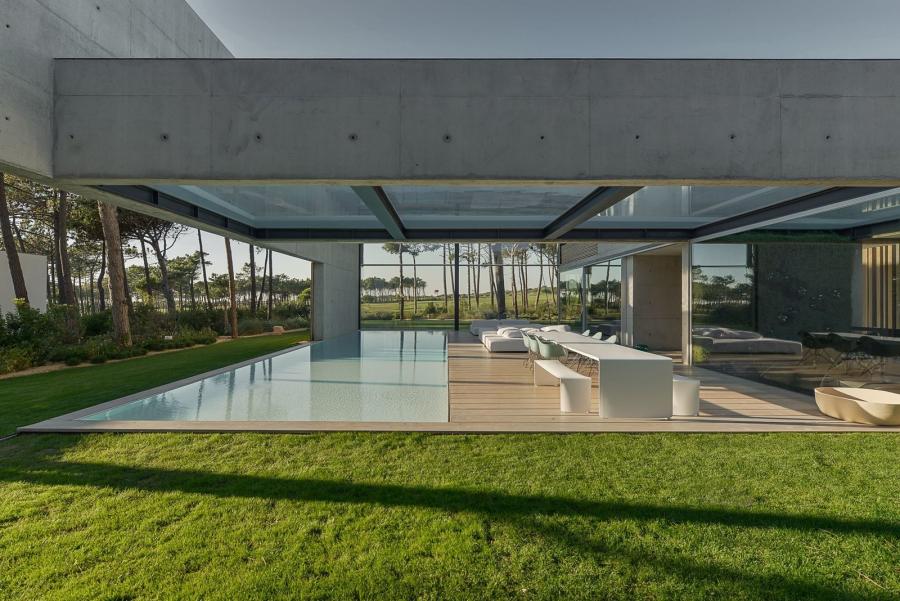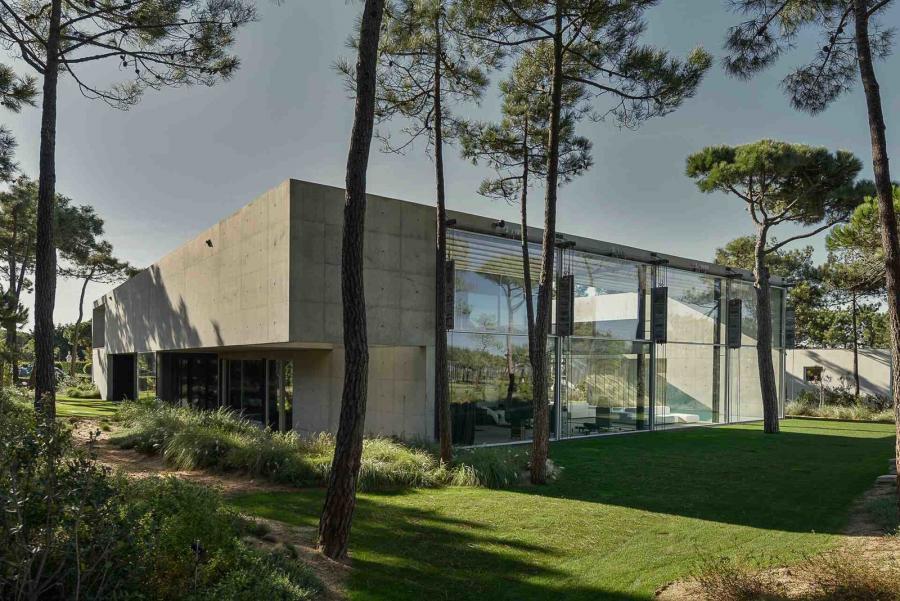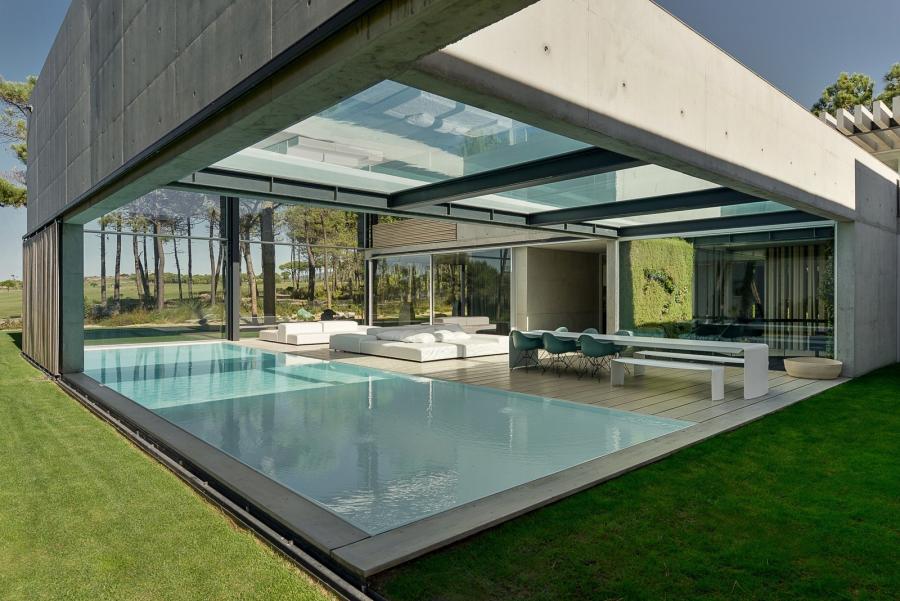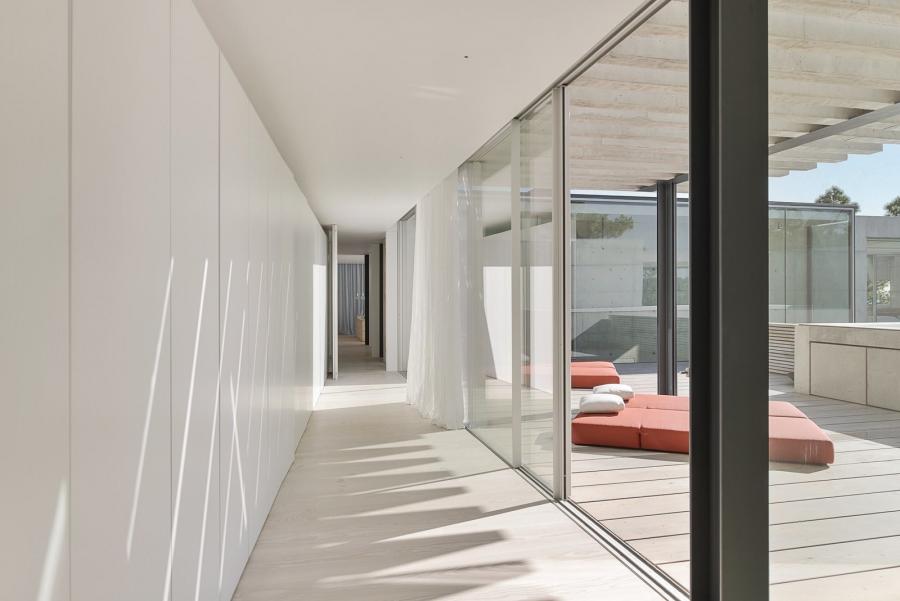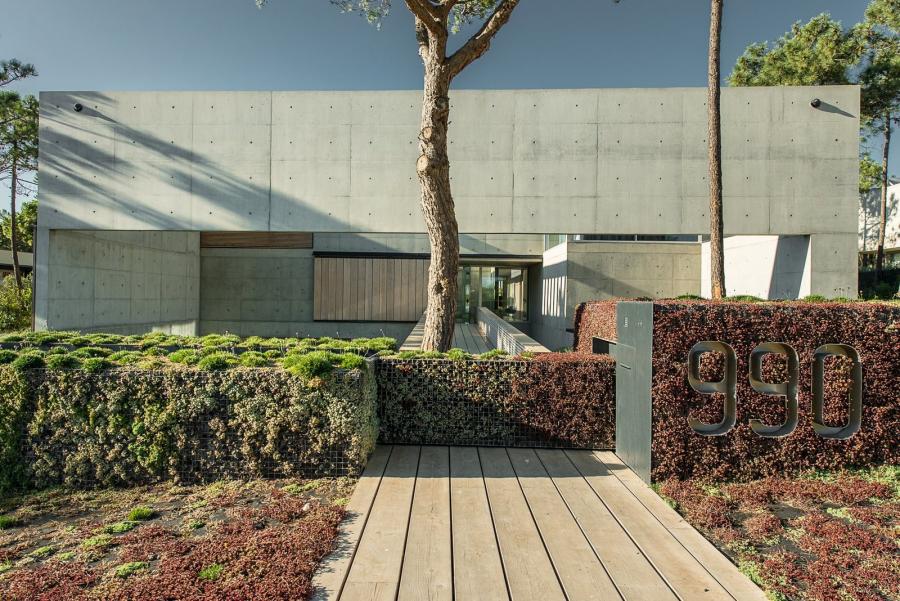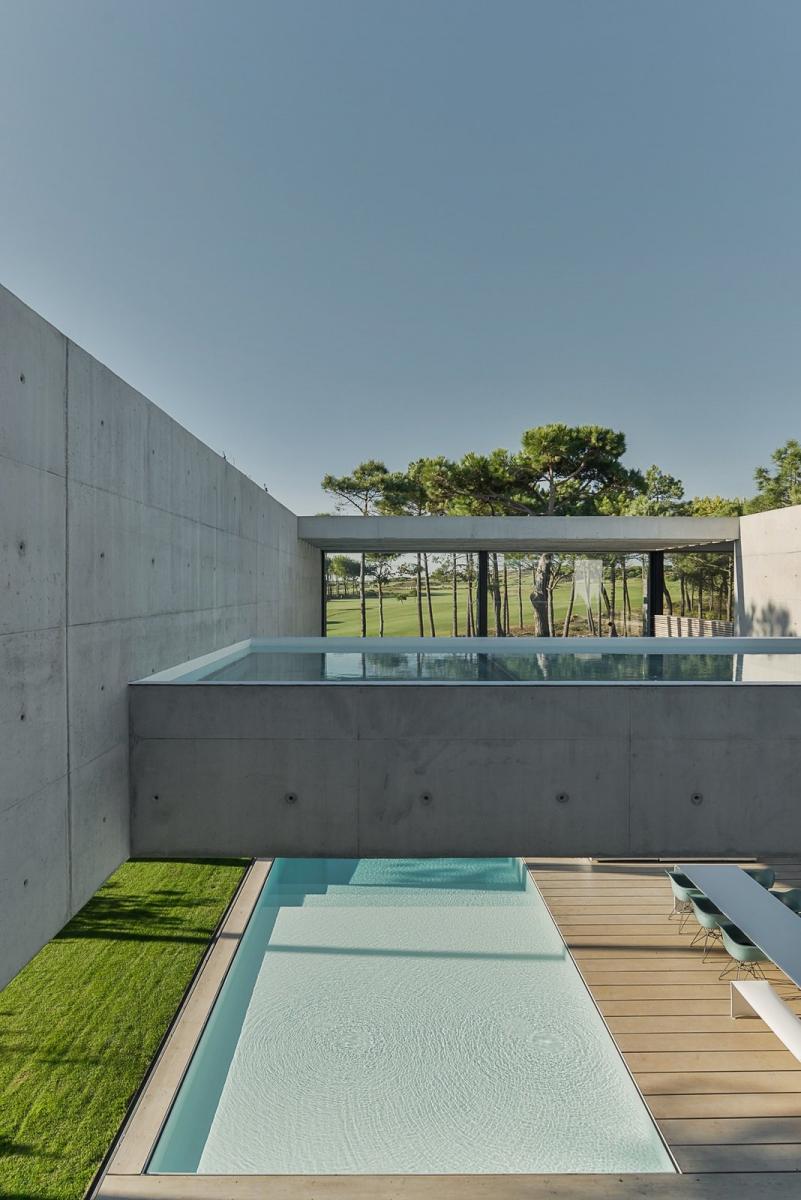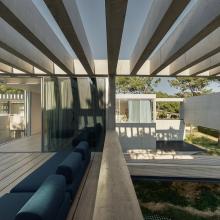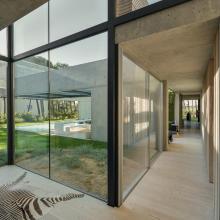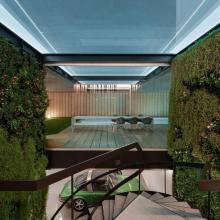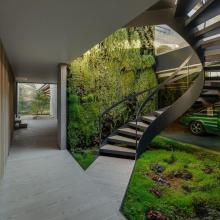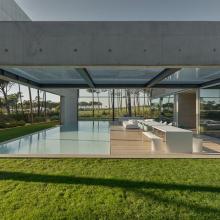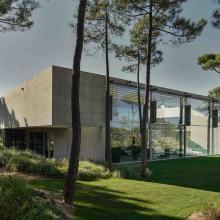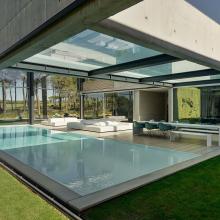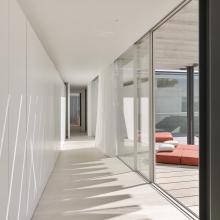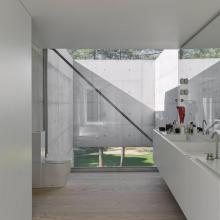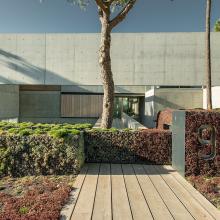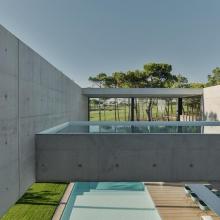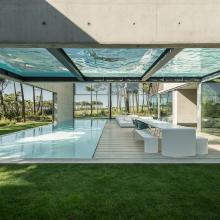The Wall House - Cascais, Lisbon, Portugal
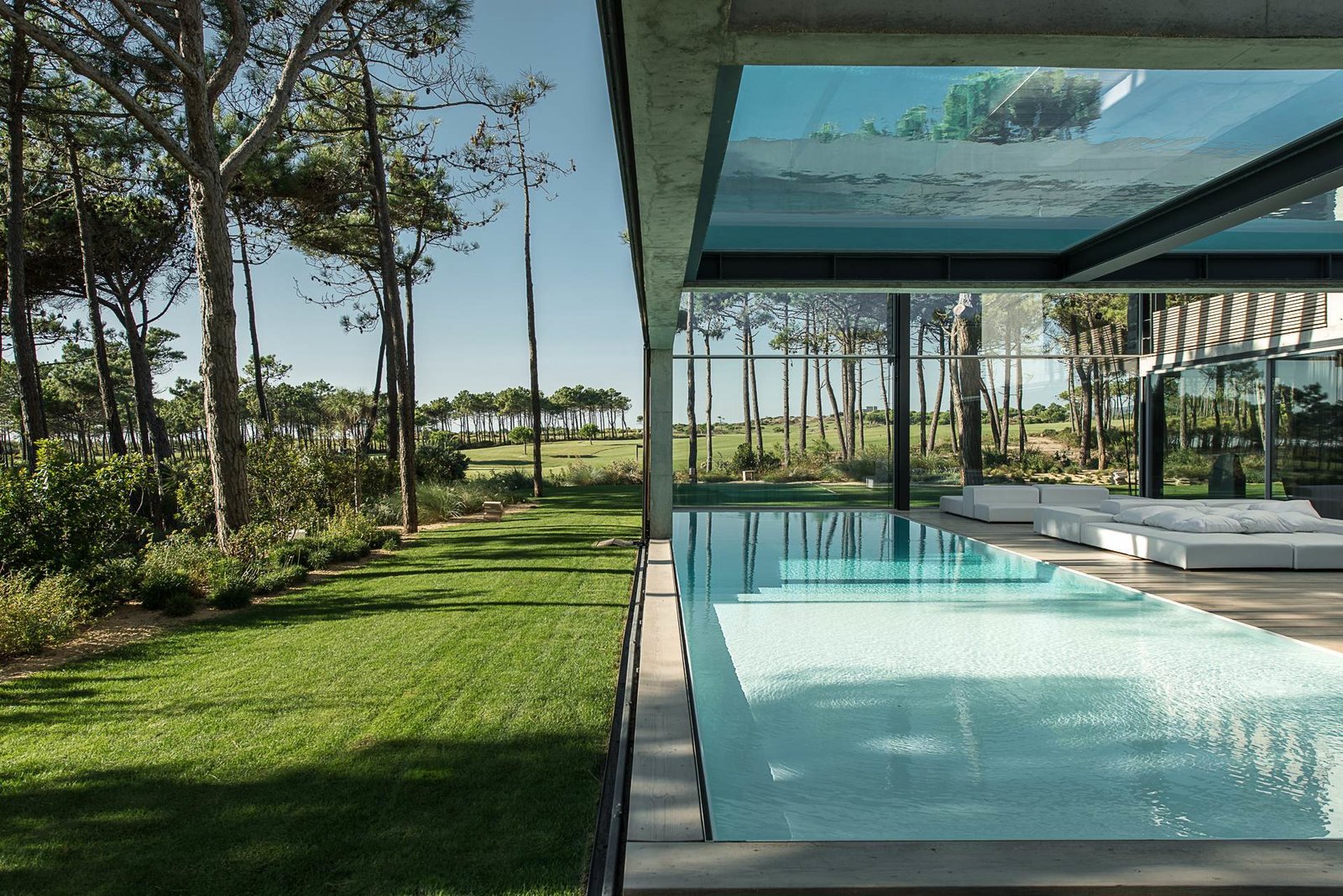
The Wall House in Cascais, a coastal town in an area known as the Portuguese Riviera, is an 11,840-square-foot homemade with concrete, wood, and glass—and boasts a pair of large swimming pools on two levels.
Designed by José Guedes Cruz, César Marques, and Marco Marinho of the Portugal-based firm Guedes Cruz Architects, The Wall House is laid out in an open-box plan and is fitted with plenty of glass windows to enhance the synergy between its interior and exterior spaces.
Anchored around a large patio that seamlessly connects the house’s indoor and outdoor spaces, one side of the property has an expansive glass wall that serves as a window, which can be opened to further connect the interiors to the surrounding greenery and golf course.
Open slatted wood elements are incorporated along the house’s concrete exterior walls, so the slats can be shut when privacy is desired.
These wood slat coverings also offer protection against the Atlantic winds.
Set on a 24,649-square-foot plot on the edge of a golf course, the house’s most remarkable feature is its bisecting outdoor swimming pools. The first is on the ground level, while the second is positioned perpendicular to the first on the upper level.
Designed as a bridge-like structure, the pool on the upper level hovers above the patio and cross-section of the ground-level pool.
Guedes Cruz Arquitectos fitted the pool with a glass bottom, creating a surreal visual effect, where swimmers above can look down at those in the pool below, and vice versa.
The Wall House’s bold, modern, geometric design brings together the elements of water, air, nature, light, and architecture in a way that's both innovative and delightful.
Designed by José Guedes Cruz, César Marques, and Marco Marinho of the Portugal-based firm Guedes Cruz Architects, The Wall House is laid out in an open-box plan, and is fitted with plenty of glass windows to enhance the synergy between its interior and exterior spaces.

